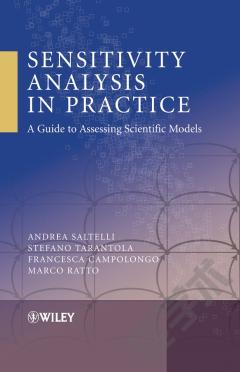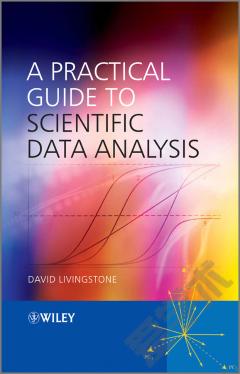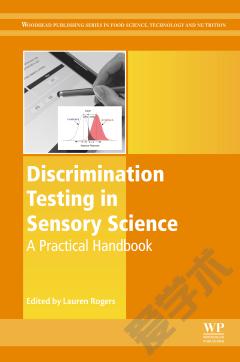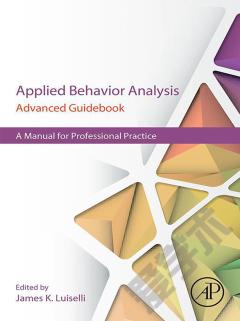Sensitivity Analysis in Practice —— A Guide To Assessing Scientific Models
----- 灵敏度分析实践:评价科学模型指南
PREFACE. 1. A WORKED EXAMPLE. 1.1 A simple model. 1.2 Modulus version of the simple model. 1.3 Six--factor version of the simple model. 1.4 The simple model 'by groups'. 1.5 The (less) simple correlated--input model. 1.6 Conclusions. 2. GLOBAL SENSITIVITY ANALYSIS FOR IMPORTANCE ASSESSMENT. 2.1 Examples at a glance. 2.2 What is sensitivity analysis? 2.3 Properties of an ideal sensitivity analysis method. 2.4 Defensible settings for sensitivity analysis. 2.5 Caveats. 3. TEST CASES. 3.1 The jumping man. Applying variance--based methods. 3.2 Handling the risk of a financial portfolio: the problem of hedging. Applying Monte Carlo filtering and variance--based methods. 3.3 A model of fish population dynamics. Applying the method of Morris. 3.4 The Level E model. Radionuclide migration in the geosphere. Applying variance--based methods and Monte Carlo filtering. 3.5 Two spheres. Applying variance based methods in estimation/calibration problems. 3.6 A chemical experiment. Applying variance based methods in estimation/calibration problems. 3.7 An analytical example. Applying the method of Morris. 4. THE SCREENING EXERCISE. 4.1 Introduction. 4.2 The method of Morris. 4.3 Implementing the method. 4.4 Putting the method to work: an analytical example. 4.5 Putting the method to work: sensitivity analysis of a fish population model. 4.6 Conclusions. 5. METHODS BASED ON DECOMPOSING THE VARIANCE OF THE OUTPUT. 5.1 The settings. 5.2 Factors Prioritisation Setting. 5.3 First--order effects and interactions. 5.4 Application of Si to Setting 'Factors Prioritisation'. 5.5 More on variance decompositions. 5.6 Factors Fixing (FF) Setting. 5.7 Variance Cutting (VC) Setting. 5.8 Properties of the variance based methods. 5.9 How to compute the sensitivity indices: the case of orthogonal input. 5.9.1 A digression on the Fourier Amplitude Sensitivity Test (FAST). 5.10 How to compute the sensitivity indices: the case of non--orthogonal input. 5.11 Putting the method to work: the Level E model. 5.11.1 Case of orthogonal input factors. 5.11.2 Case of correlated input factors. 5.12 Putting the method to work: the bungee jumping model. 5.13 Caveats. 6. SENSITIVITY ANALYSIS IN DIAGNOSTIC MODELLING: MONTE CARLO FILTERING AND REGIONALISED SENSITIVITY ANALYSIS, BAYESIAN UNCERTAINTY ESTIMATION AND GLOBAL SENSITIVITY ANALYSIS. 6.1 Model calibration and Factors Mapping Setting. 6.2 Monte Carlo filtering and regionalised sensitivity analysis. 6.2.1 Caveats. 6.3 Putting MC filtering and RSA to work: the problem of hedging a financial portfolio. 6.4 Putting MC filtering and RSA to work: the Level E test case. 6.5 Bayesian uncertainty estimation and global sensitivity analysis. 6.5.1 Bayesian uncertainty estimation. 6.5.2 The GLUE case. 6.5.3 Using global sensitivity analysis in the Bayesian uncertainty estimation. 6.5.4 Implementation of the method. 6.6 Putting Bayesian analysis and global SA to work: two spheres. 6.7 Putting Bayesian analysis and global SA to work: a chemical experiment. 6.7.1 Bayesian uncertainty analysis (GLUE case). 6.7.2 Global sensitivity analysis. 6.7.3 Correlation analysis. 6.7.4 Further analysis by varying temperature in the data set: fewer interactions in the model. 6.8 Caveats. 7. HOW TO USE SIMLAB. 7.1 Introduction. 7.2 How to obtain and install SIMLAB. 7.3 SIMLAB main panel. 7.4 Sample generation. 7.4.1 FAST. 7.4.2 Fixed sampling. 7.4.3 Latin hypercube sampling (LHS). 7.4.4 The method of Morris. 7.4.5 Quasi--Random LpTau. 7.4.6 Random. 7.4.7 Replicated Latin Hypercube (r--LHS). 7.4.8 The method of Sobol'. 7.4.9 How to induce dependencies in the input factors. 7.5 How to execute models. 7.6 Sensitivity analysis. 8. FAMOUS QUOTES: SENSITIVITY ANALYSIS IN THE SCIENTIFIC DISCOURSE. REFERENCES. INDEX.
{{comment.content}}








 京公网安备 11010802027623号
京公网安备 11010802027623号